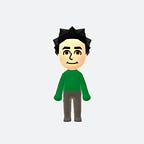A Window Into Block Play — Process
Nick Marotta
The prompt for this project was to enable an autographic physicalization of a normally unseen phenomenon. For the physicalization to be autographic, the phenomenon must create evidence of itself.
I decided to focus on block play in the context of early education. When kids play with blocks, it can appear to be senseless chaos to adults, but there is a complex web of learning experience going on. Kids are taking what they’ve observed of the real world and modeling it in real time, trying to understand relationships, roles and responsibilities, even gaining intuition of physics and their bodies. I thought it’d be interesting to attempt to manifest some of that dynamic information in the physical structure produced by block play.
My first step was observing block play in the kindergarten of the Carnegie Mellon Children’s School.
I took many notes and sketched a few storyboards of notable interactions. I was so surprised to see dramatic stories unfold in front of me. It wasn’t just kids playing with blocks, there were intense narratives of destruction, remorse, exclusion, reconciliation, and collaboration. One aspect of block play that I didn’t anticipate to be such a dominant factor was the desire to preserve structures and the inevitable destruction of them.
At this point, I planned out a simple idea. If I could assign specific colored blocks to kids, perhaps the structures formed in block play would communicate who built what, and with whom. I might be able to physicalize participation and collaboration with such a simple intervention.
So, I made some small blocks to start experimenting with this on a small scale.
I decided to take advantage of the mid-semester show as an opportunity to see what people could glean from different scenes of blocks. With even less information than a parent, teacher, or playworker would have (they’d be observing the kids’ interactions over time as well as the blocks), what conclusions would people make from just the blocks?
So, I set up two “storyboards” of block structures over time, and a third standalone photo, with sticky notes prompting people to tag photos with their takeaways.
I got lots of interesting responses all over the images. I was surprised to see how readily people imagined emotional beings behind the blocks.
Moving forward, I plan to experiment with different ways to represent more information in the blocks, like the axis of positive/negative interaction; how can I show whether someone is using stolen blocks, for instance? I am also going to push the form further into the scale of large-scale structures. Interactions tend to be much richer and imagined contexts are more representational in that scale.
